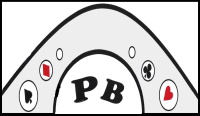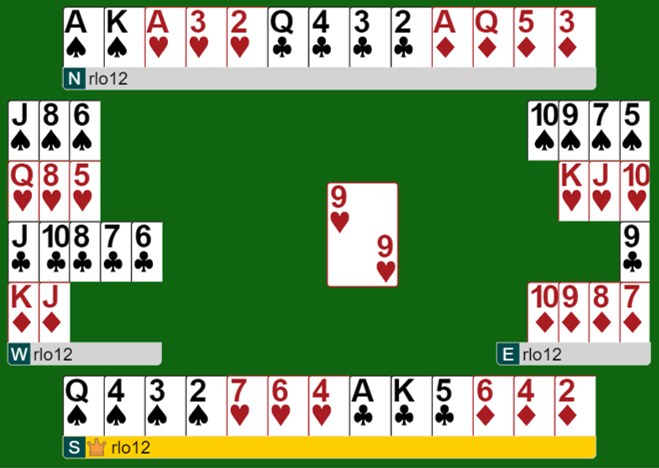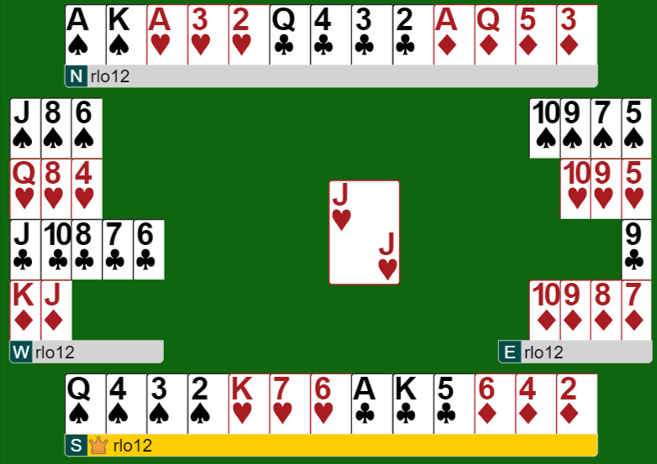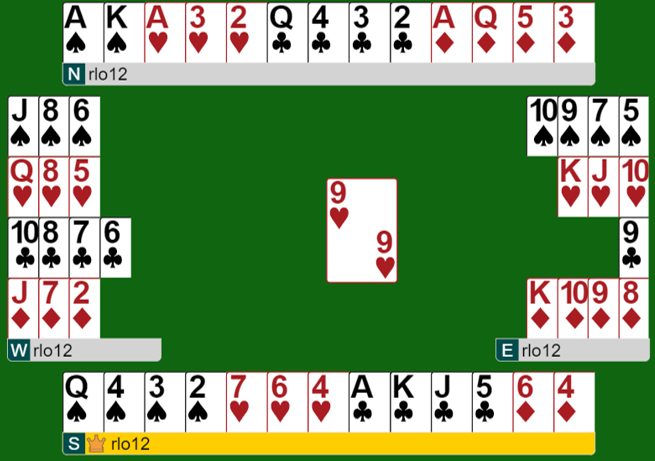A finesse is any manoeuvre in bridge attempting to make a trick whereby the success of the manoeuvre depends on the location of missing honours in defenders hands.
Don’t worry, by the end of this guide you should understand what that means!
This is the most textbook kind of finesse –
North – ♠AQJ10
South – ♠765
Say you are playing in no trumps. This spade suit is always going to be worth 3 tricks. But there is a chance that you may be able to make 4 by avoiding losing to the King. Your ability to do this depends on the location of the missing King.
If you lead from South then you put West in the position of having to choose to play the King or not BERFORE you play from North.
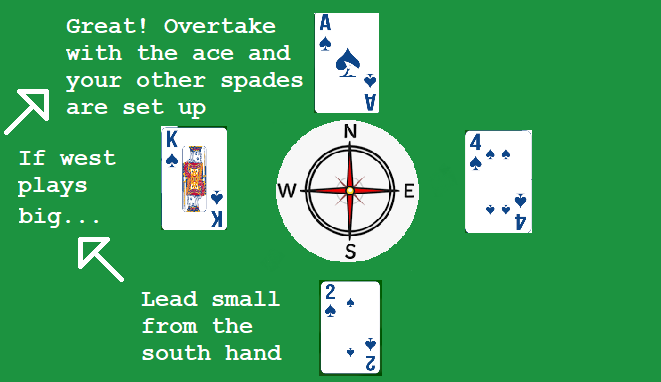
Because this kind of finesse allows you to avoid losing to a missing honour by trapping it under your honours it is known as a TRAP FINESSE.
Unfortunately opponents are not always so kind as to play the missing honour on the first round. In that case…
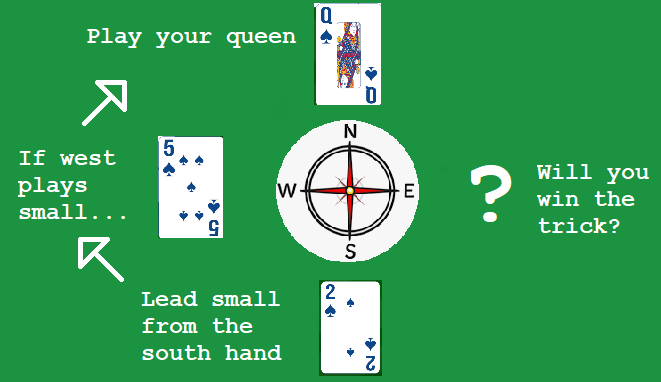
If the missing king is in the east hand then it will win this trick. However if this happens don’t worry, it is a trick you will always have lost.
If the missing king is in the west hand, and they have chosen not to play it, then you will win this trick with the queen.
This means that the chances of a finesse working at 50/50, all else being equal. Don’t let this put you off if you need to try a finesse. Take the above spade suit. If you just play out the top spades you will lose a spade trick 100% of the time. If you try the finesse you will avoid a spade loser 50% of the time.
Also remember that if a finesse fails for you and means you go down in a contract then this will happen to everyone else as well. As long as your bidding was sound you will not get a bad score.
Remember!!
If a finesse works you may need to take it again. Look again at the previous example in a bit more detail.
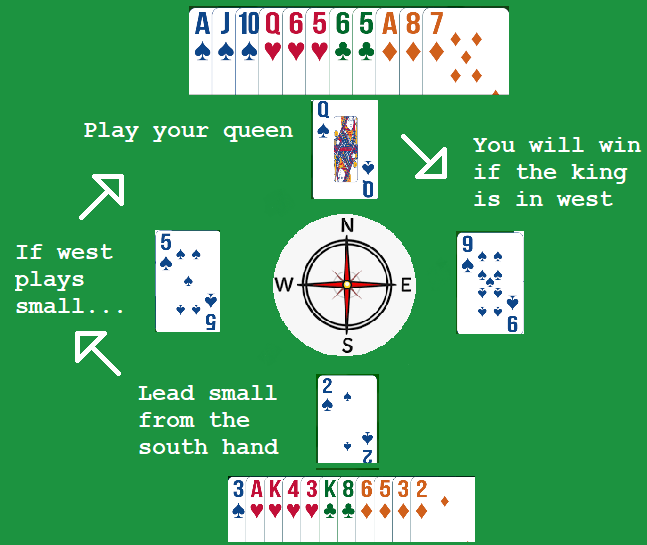
Once the above trick is complete you have established for sure that the missing king of spades is in the west hand. If east had had it they would have played it over the queen.
Think about your position now in spades. You know the king is in west. There is a slim chance that if you play your ace of spades the king will drop, but since you didnt start with a huge number the odds of west being short in spades is low.
The only way to make sure that you make all your spades is to cross back to the south hand and take the finesse again. In this hand there is a nice entry in south in the form of the AK of hearts. Once the lead is back in the south, lead another small spade and play the same as the first time; if west plays the king, cover with your ace. If west plays small then win with your J or 10.
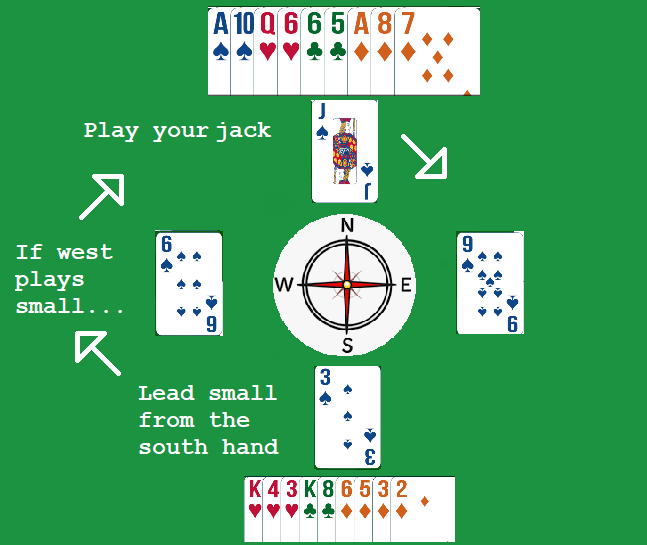
At this point you cannot take the finesse again as you have no more spades in the south hand. However, now 8 spades have been played. You can see 2 more in your hand. So the opponents have 3 left. This means the chances are much better now that the king will drop if you play the ace of spades.
Remember to think about entries and leads when planning a finesse. You will not be able to finesse if you lack the required number of entries or lead cards in the suit.
Finessing with AKJ10
If you have AKJ10 in a suit and are planning to try to finesse the queen, make sure that you win a round with the ace or king first. This will make sure that you don’t lose a trick to a singleton queen. In the hand below, if you attempt to finesse the spades before winning the ace or king, you will lose to a singleton queen off side.
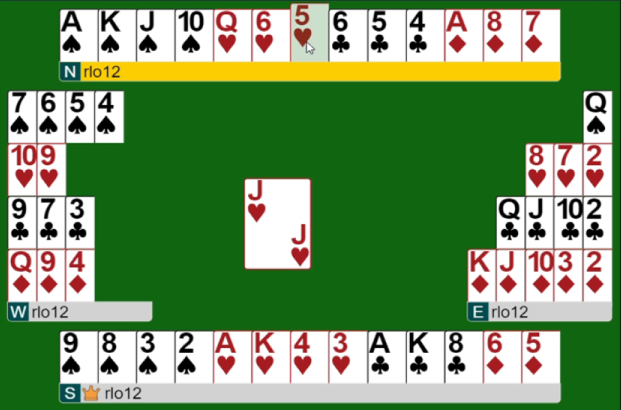
Bypass Finesses
There are several different kinds of finesse – the term covers any manoeuvre which aims to establish a card(s) by hoping that any larger cards are in the correct defender’s hand.
If you have an unsupported honour in a suit you may be able to win a trick by leading towards it.
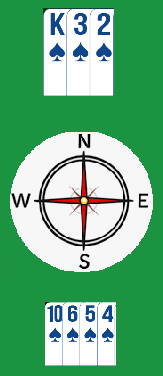
In this spade suit you have a chance of winning your king by leading small towards it.
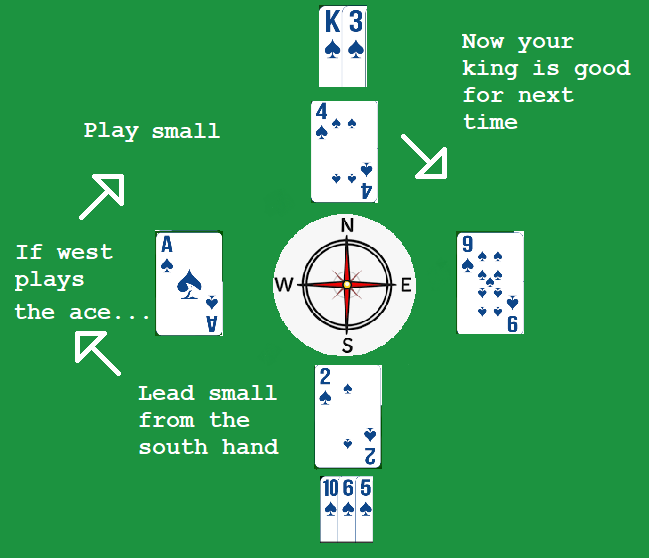
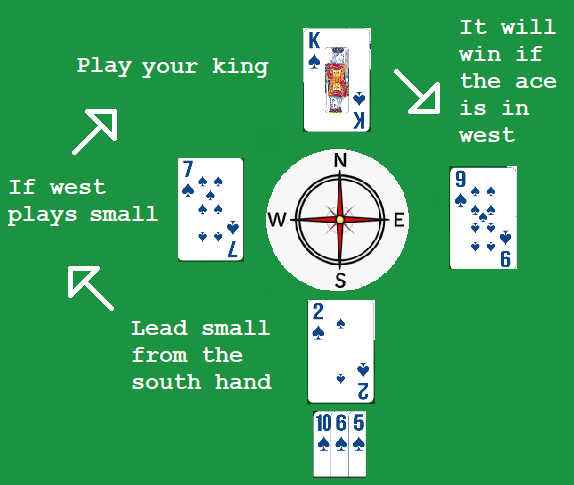
If you have ace in one hand and an unsupported queen in the other you should lead towards the queen. If you lead the queen and the next hand overtakes you can win the ace but then you will have nothing left to win in the suit.
When to finesse
1.If you really need to in order to have a chance of making your contract.
2.If you are absolutely sure that your contract is safe then you might try a finesse for extra tricks.
Do NOT finesse if
1.it places a making contract in jeopardy
2.You have an alternative plan available with a better chance of success
You SHOULD be finessing with hands like these-
This hand is playing in 3NT and has 8 top winners to begin with. The diamond finesse is the only chance of making the contract.
This hand has 9 definite top tricks. There is no danger in trying the diamond finesse for extra tricks. Remember with an unsupported queen you should lead small from south towards the queen.
You SHOULD NOT be finessing with hands like these-
This hand is very similar to the one above. However, this time you have only the ace in hearts rather than AK. On a heart lead you will have to use your ace to gain initial control. This means that you can no longer risk the finesse. If you lose the lead opponents are going to cash a load of heart tricks and you will go off in a certain contract.
DANGER!
There are a few things to think about if you are considering a finesse.
- Entries
Can you get into the hand you need to lead from enough times to take your finesse. If you have AQJx in a suit then you may need to lead towards this twice to establish both the queen and jack. If you are finessing a split suit (e.g. Axx in one hand and QJ10x in the other) remember to lead the largest from the sequence, the queen in this case. This means that if the next opponent plays small you can play small from your other hand and the lead will remain where you want it to take the finesse again.
2. Controls
Can you afford to lose the lead? As in the example above, there are some boards where a finesse is not worth the risk. If you lack controls but need a finesse to work then you will have to try it anyway and keep your fingers crossed.
3. Info from bidding and lead
Although the chances of a finesse are 50/50, this is all else being equal. There are times when you will have information from the bidding and opening lead which can help you to decide if a finesse will work. For example if the bidding has gone 1 spade from you, 2 diamond overcall from left hand opponent, 3 spades from partner, pass, 4 spades by you, then you know that right hand opponent has very few points and is therefor less likely to have the missing honours.
If opposition overcall then they are showing a suit with 2 of the top honours. This is very helpful in working out the point distribution. Remember especially that if they are bidding pre-emptively they are unlikely to have honours outside the suit bid.
Oppositions opening lead will also give you information. Remember that a small card in a suit indicates an honour in that suit, and an honour promises the honour below (e.g. leading a king promises that you have the queen in that suit.)
Conclusion
Finesses are very difficult to master, as they can occur in many different forms. Learn the basic mechanics of trap and bypass finesses and you should be well equipped to spot and execute more complex finesses.
